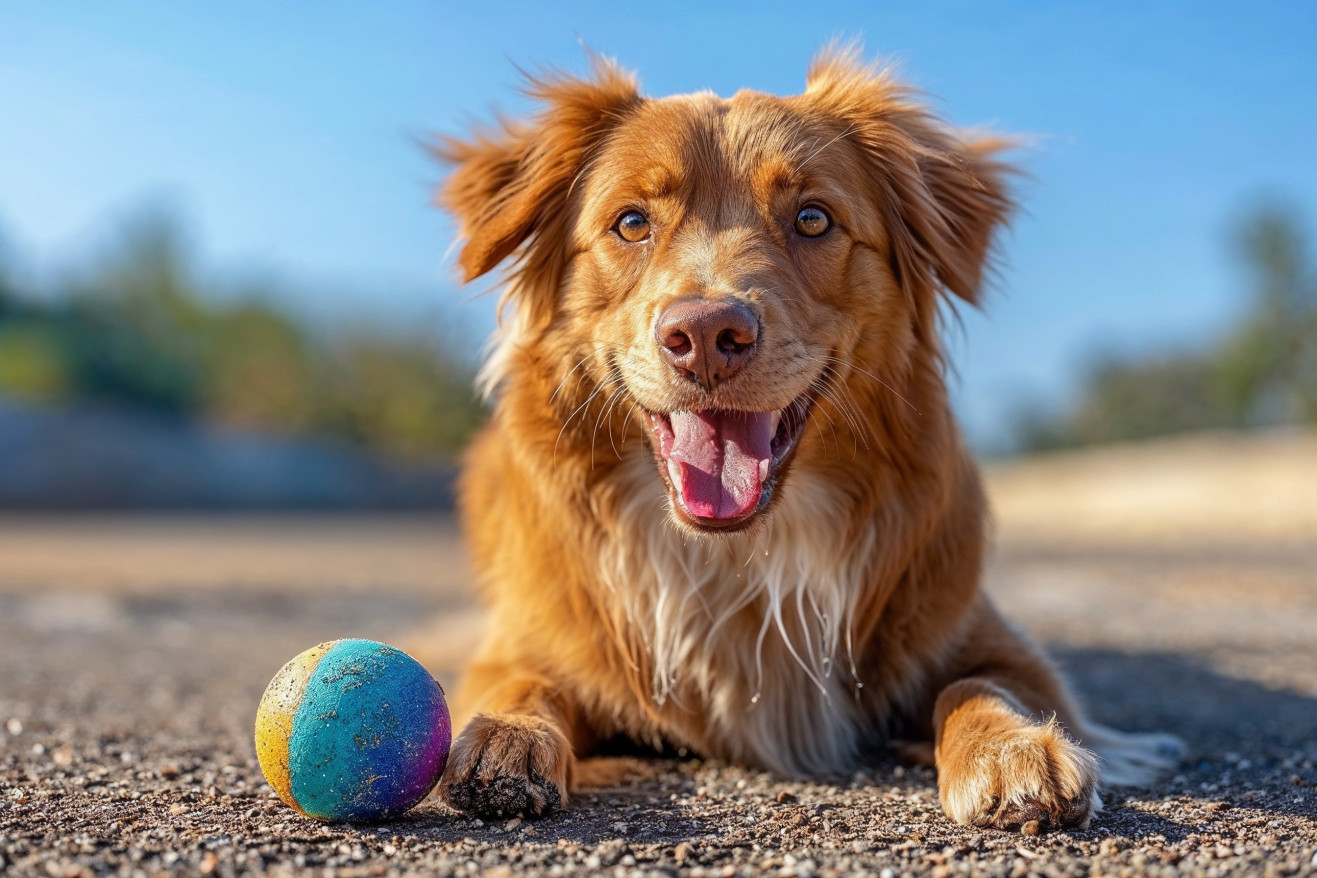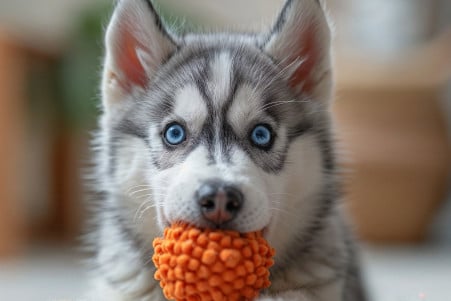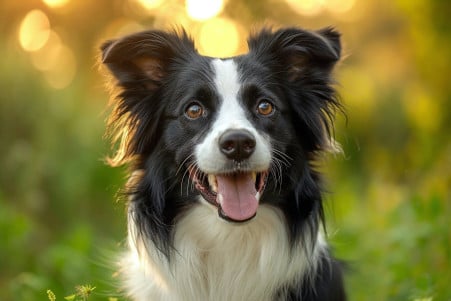Why Are Old Dogs Still Playful? The Science Behind Canine Senescence
20 January 2024 • Updated 30 January 2024

It’s always heartwarming to see an older dog playing like a puppy, but what causes this behavior? In addition to the evolutionary pressures of domestication, which selected for reduced aggression and increased sociability, dogs have been bred to maintain their playfulness throughout their lives. Hormonal and neurological systems, such as oxytocin and dopamine, also play a role in maintaining play, and in turn, play helps to strengthen social bonds and positive affect.
Our investigation into the science behind canine senescence will delve into the fields of animal behavior, genetics, and cognitive science. We will look at the evolutionary pressures that have led to dogs’ lifelong playfulness, the biological systems that regulate play, and the roles of genetics and early experience. By the end of this in-depth investigation, you will have a scientific understanding of why your adult dog may still act like a puppy.
What are the main reasons older dogs remain playful?
The Evolutionary History of Dog Play
From the wilds of their wolf ancestors to the comforts of human homes, dogs have held onto one very special characteristic: playfulness. According to a paper from the Royal Dick School of Veterinary Studies, dogs play for a number of reasons, some of which can be linked to evolutionary benefits.
For example, play helps puppies develop motor skills and helps adult dogs prepare for the unexpected, which can help build resilience and stress-coping mechanisms. This supports the notion that playful interactions, which often require complex cognitive tasks, have been important for survival and reproduction.
The process of domestication has also shaped dog playfulness; as humans have selected for traits like tractability and cooperativeness in dogs, play has become a way to promote social cohesion and build relationships, not just between dogs, but especially with humans. This is supported by a paper in PMC, which shows that humans have selectively bred dogs over the course of domestication to increase traits, including playfulness, that promote a closer human-animal bond.
While play is generally positive, it’s not always a sure sign of good welfare. While play can be a sign of a strong relationship and good welfare, it can also be a sign of boredom or stress in some cases.
As we examine the intricate mosaic of dog behavior, it’s evident that playfulness is a complex characteristic that has deep roots in dogs’ evolutionary history and has been shaped by their relationship with humans.
The Impact of Domestication on Canine Play: From Wolves to Wiggles
In addition to turning wolves into the many dog breeds we know and love today, domestication has also had a major impact on the behavior of dogs, including their play. A paper in PubMed by Martina Lazzaroni found that domestic dogs are more interested in social interaction with humans than wolves, supporting the “hypersociability hypothesis” that domestication has increased dogs’ sociability and, potentially, their playfulness.
Differences in the way dogs and wolves think also highlight the impact of domestication. A study in Scientific Reports by Michelle Lampe found that dogs have evolved social cognitive skills to facilitate their interactions with humans, while wolves have evolved to be more independent and better problem solvers.
The genetic changes that resulted from domestication may have also led some modern breeds to play more like ancient canids, as shown in a study in Royal Society Open Science by Veronica Maglieri. Maglieri’s research found that breeds like Czechoslovakian Wolfdogs have a play style that’s less focused on humans, which is more similar to wolves.
In general, the changes domestication has made to canine cognition and sociability have had a major impact on the play of our pet dogs, and they’ve also laid the groundwork for the hormonal and neurological factors that influence their play.
Hormonal and Neurological Factors
Playfulness in dogs is influenced by a number of hormonal and neurological factors. Oxytocin, often referred to as the “love hormone,” is one of the most important hormones in the dog-owner relationship.
Interactions with humans cause a spike in dogs’ oxytocin levels, increasing their playfulness and strengthening their bond with their owners. This hormonal reaction cements the social bond, ensuring that play is a rewarding experience for both the dog and the human.
On the other hand, cortisol, often associated with stress, has been shown to have a negative correlation with play. Dogs with lower cortisol levels were more likely to engage in play-soliciting behaviors, suggesting that a lack of stress is more conducive to a dog’s desire to play.
On a neurological level, the dog brain is set up to support play through areas of the brain that are associated with attachment and emotion. As a review in Scientific Reports explains, neuroimaging studies have shown that certain areas of the dog brain light up in response to human faces and emotions, which indicates that dogs are neurologically predisposed to seek and enjoy social interactions with humans, a key component of play.
These hormonal and neurological factors not only enable play but also have important welfare implications, ensuring that play continues to be an important part of a dog’s life and contributes to their physical and emotional health.
The Genetic Blueprint of Dog Play
The playfulness of dogs is more than just a cute personality trait; it’s actually written into their genetic code. A study in Biology Letters found that herding and sporting dogs, which have a genetic history of working closely with humans, have more intense human-directed play behavior.
Meanwhile, a study in the Proceedings of the Royal Society B: Biological Sciences found that breeders have selected for play-related traits for generations, indicating that the heritability of these traits is deeply ingrained in the breeds.
Breeders have used artificial selection to create breed-specific behaviors, often selecting for traits like playfulness to help build stronger human-animal relationships. This has impacted the behavior of modern breeds and ensured that their playfulness is still linked to their ancestors.
In addition, as Learning & Behavior explains, breed-specific motor patterns play a role in how different breeds play. Dogs bred for specific purposes have been bred to have genetic markers that impact their play behaviors, from the herding dogs’ natural stalking and chasing to the retrievers’ built-in grab-bite sequence.
This genetic background helps explain why different breeds have different levels of playfulness and shows that the many factors that go into play behavior are as complex as they are delightful to dog owners everywhere.
Fostering Playfulness: The Role of Enrichment and Socialization
Environmental enrichment and socialization are key to maintaining a dog’s playful nature. According to the IAABC Journal, a variety of enrichment opportunities, including social and physical play, can have a profound impact on a dog’s well-being, leading to a happier, more playful dog. These opportunities, which can include everything from interactive toys to play dates with other dogs, help to elicit and reinforce positive behaviors that are associated with relaxation and happiness.
The role of socialization and the human-dog relationship is also important in fostering playfulness. A study in PMC found that the quality of the relationship between a dog and its owner has a significant impact on a dog’s emotional reactivity, leading to dogs that are more relaxed, satisfied, and likely to play.
Moreover, the relationship between an owner’s personality and lifestyle and a dog’s behavior is important to consider. A study in ScienceDirect found that a dog’s fearfulness and the presence of children in an owner’s household can impact this relationship, which in turn impacts a dog’s playfulness.
Toys and play opportunities are important for fostering both independent and social play, which are important for mental and physical well-being.
As outlined in a study in PMC, the way owners perceive their dogs is intertwined with their dogs’ personalities, which in turn impacts their emotional reactivity. By understanding these factors, dog owners can work to create a stimulating environment that meets their dog’s needs and preferences, ensuring that their pets remain playful throughout their lives.
Final Thoughts on the Genetics, Biology, and Environment of Canine Play
The studies we’ve discussed in this article have come together to paint a rich and complex picture: dogs’ ability to play like puppies throughout their lives is the result of a complex interplay between genetics, biology, and environment.
An article in PMC explains that domestication has been key in this process, as it has led to the selection of traits that improve the human-animal bond, including play. Meanwhile, hormonal influences, especially oxytocin, are at the heart of the pleasure that dogs and their human companions experience when they play together, strengthening their bond.
At the same time, genetics have also played a role in the evolution of play, with breed-specific behaviors being honed through generations of selective breeding. And of course, the environment and socialization have a big impact on a dog’s ability to play. By understanding these different factors that contribute to play in dogs, we can not only improve our relationships with our pets, but also have a major impact on their well-being.
In addition, the many factors that contribute to play in dogs, as outlined in a study by Rebecca Sommerville and her colleagues, suggest that there is much more to learn about this topic. By continuing to investigate the factors that contribute to play in dogs and by working to meet the needs of individual dogs, we can help ensure that dogs and their human companions enjoy a lifetime of happiness and health together.


